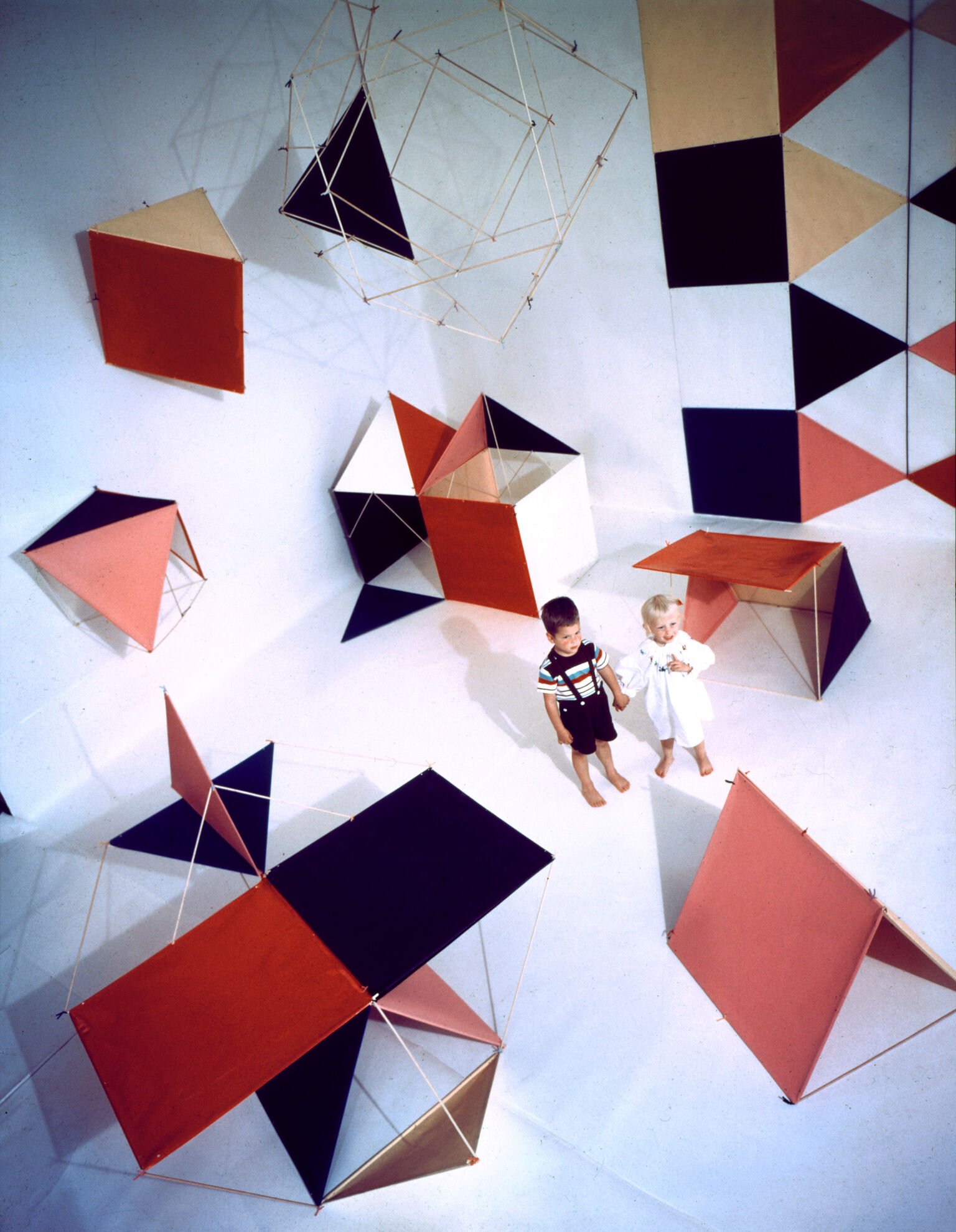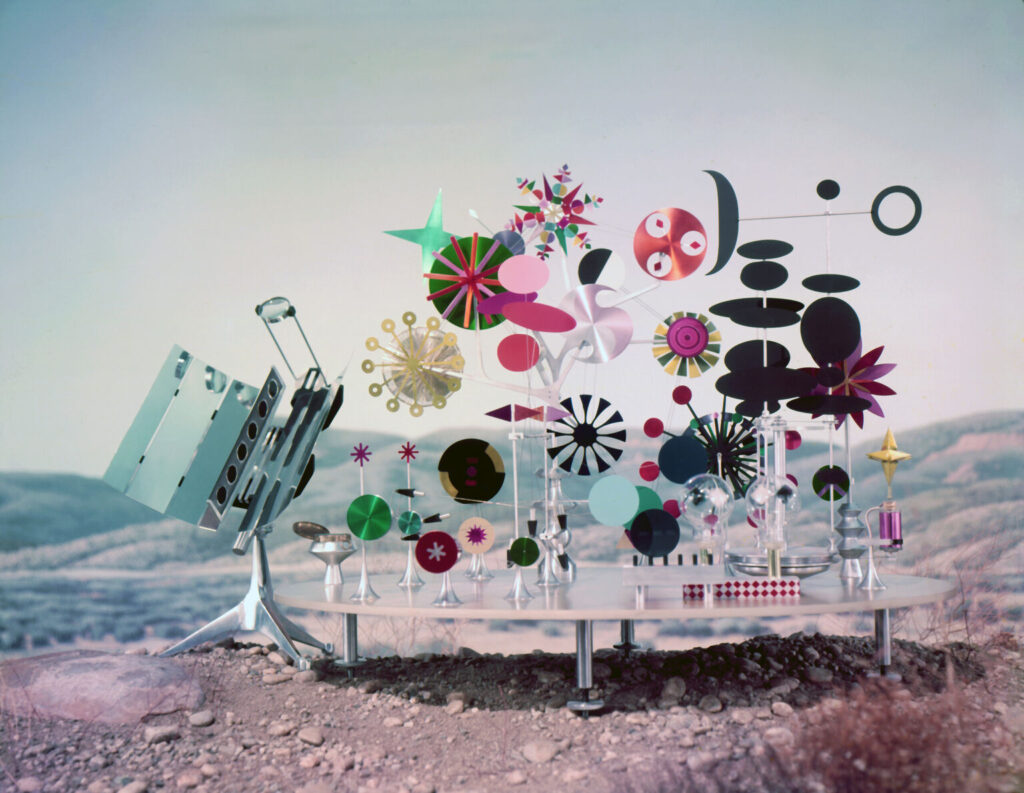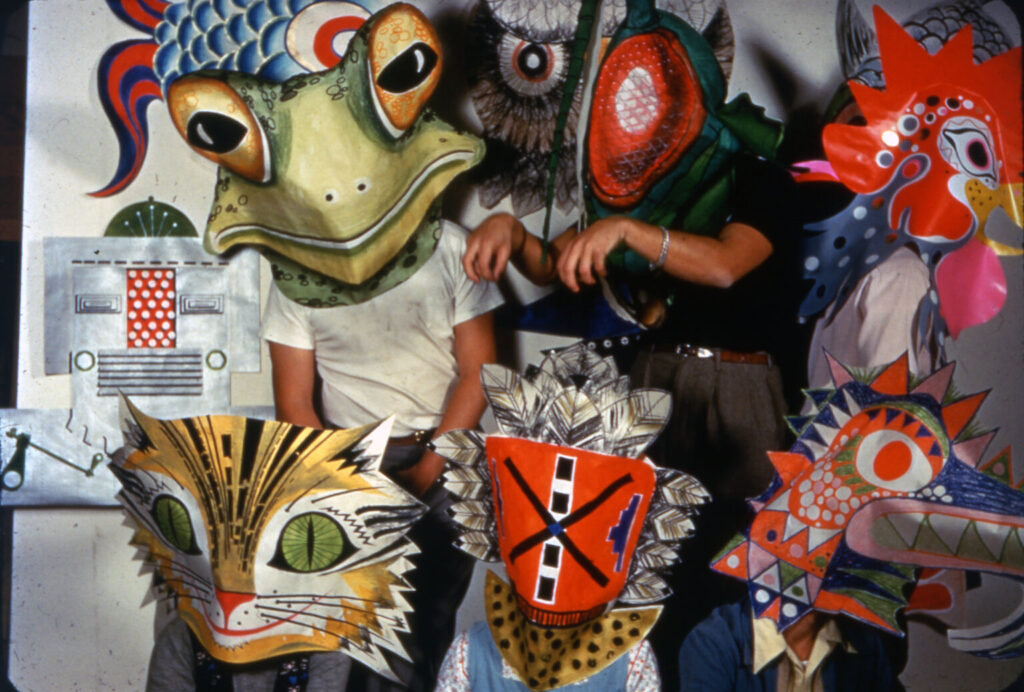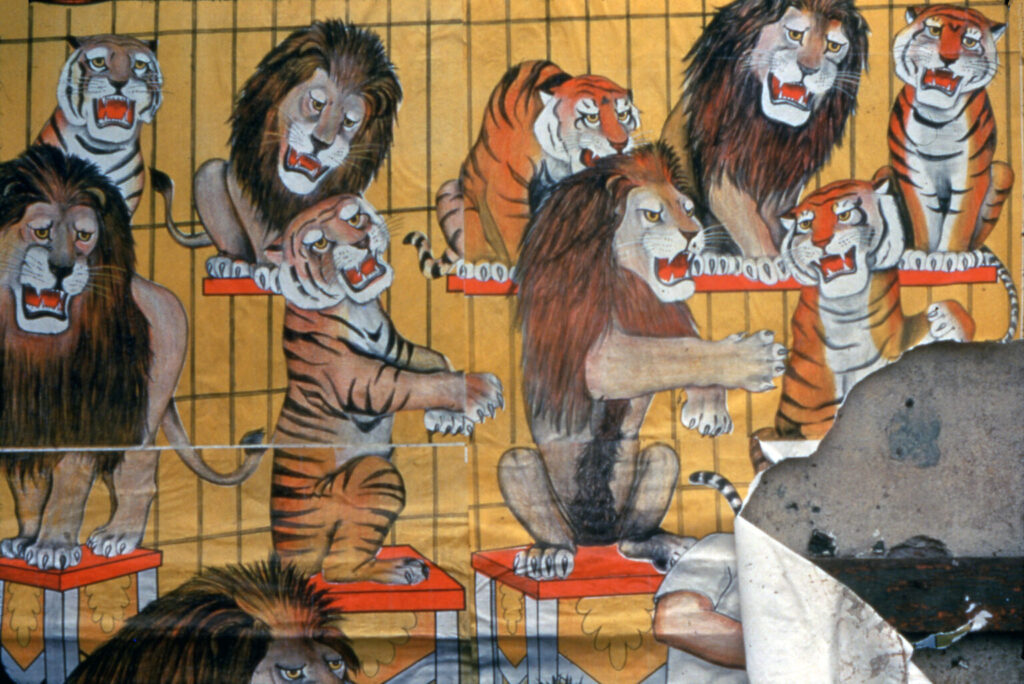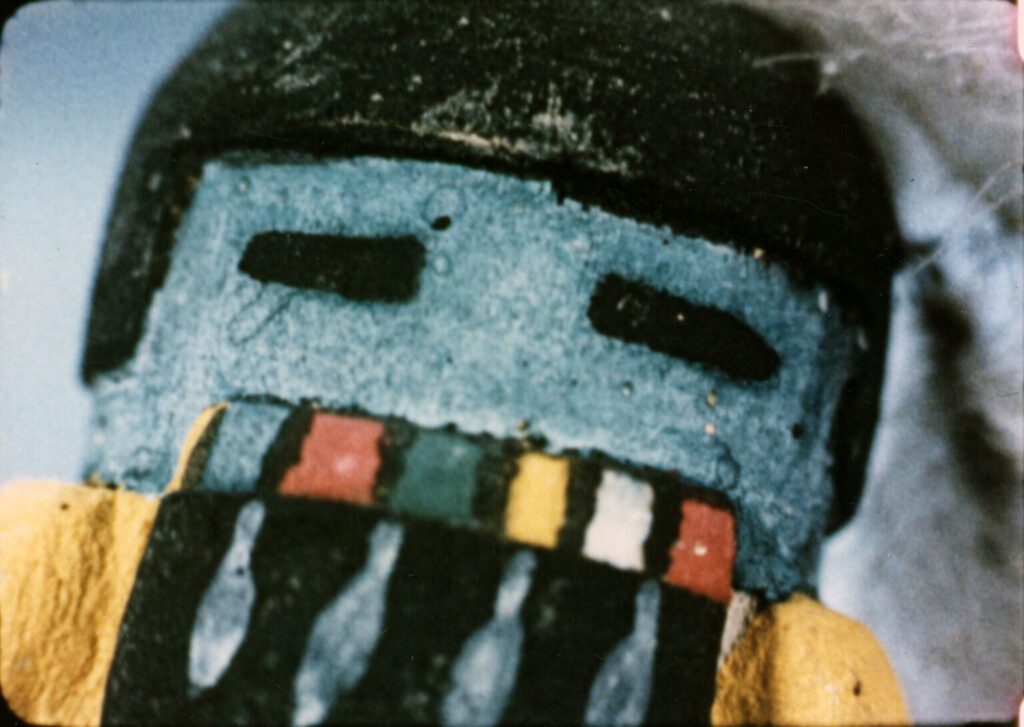Charles Eames believed that a good toy held clues to the era of its inception. Looking within the walls of the Eames during Charles and Ray’s illustrious careers offered evidence that good toys were ever-part of the Eameses’ surroundings-not simply as decor, but as a resource used to solve many problems.
Toys found a place in the Eames design catalog on numerous occasions, and the Eames Office approached them with the same importance as their more renowned furniture designs. Often, toys crossed over into other Eamesian mediums, such as film. Think of the films Tops and Toccata for Toy Trains. Parade (like Toccata) casted an ensemble of toys in a live-action pageant. Kaleidoscope Jazz Chairs highlighted elements of the Eames world through the lens of a particulartoy: the kaleidoscope. Polavision Vignettes: Kites, created as a commission for Polaroid, served as a how-to for kite building.
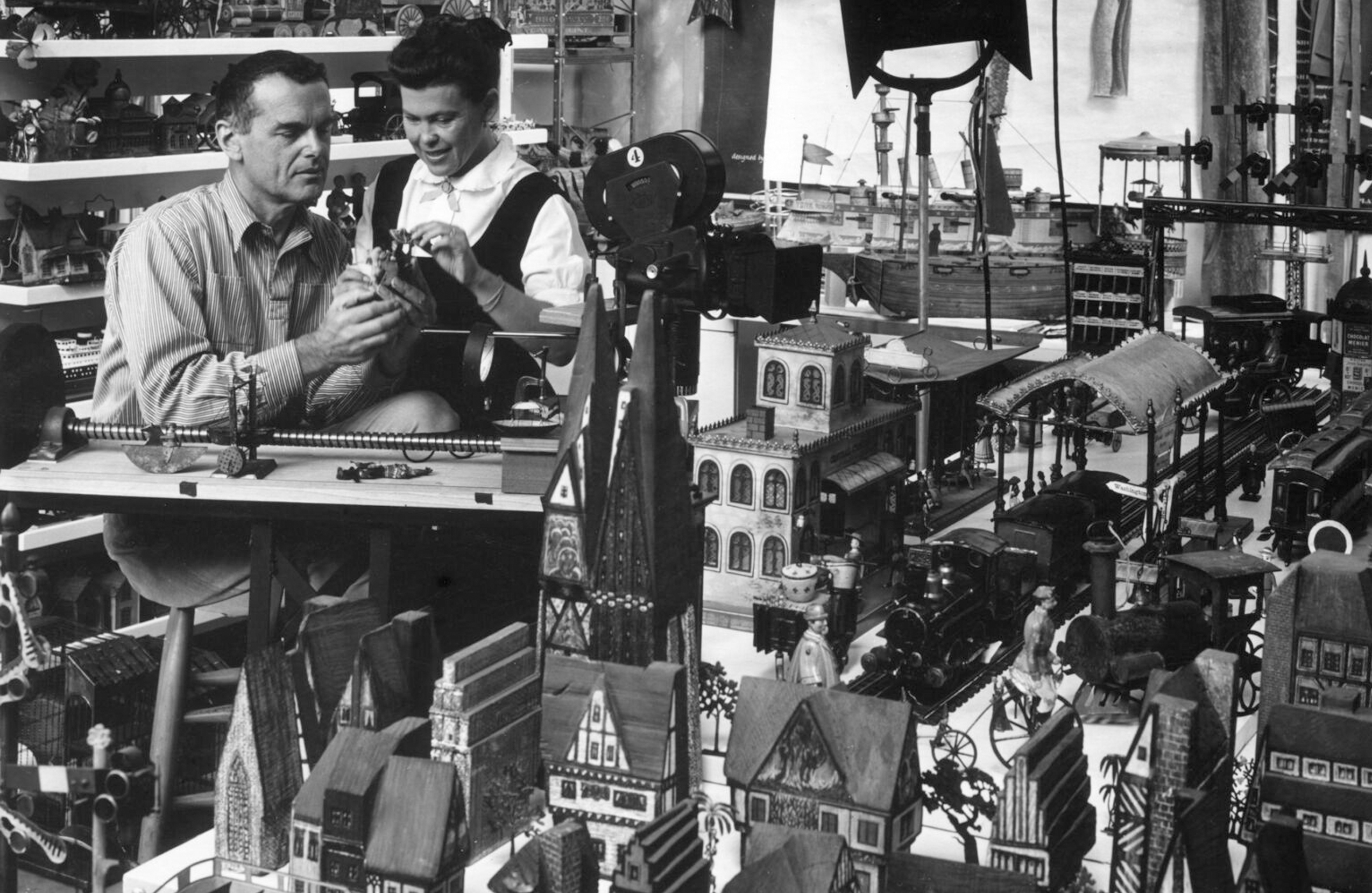
“Toys are not really as innocent as they look. Toys and games are precursors to serious ideas.”
Charles Eames
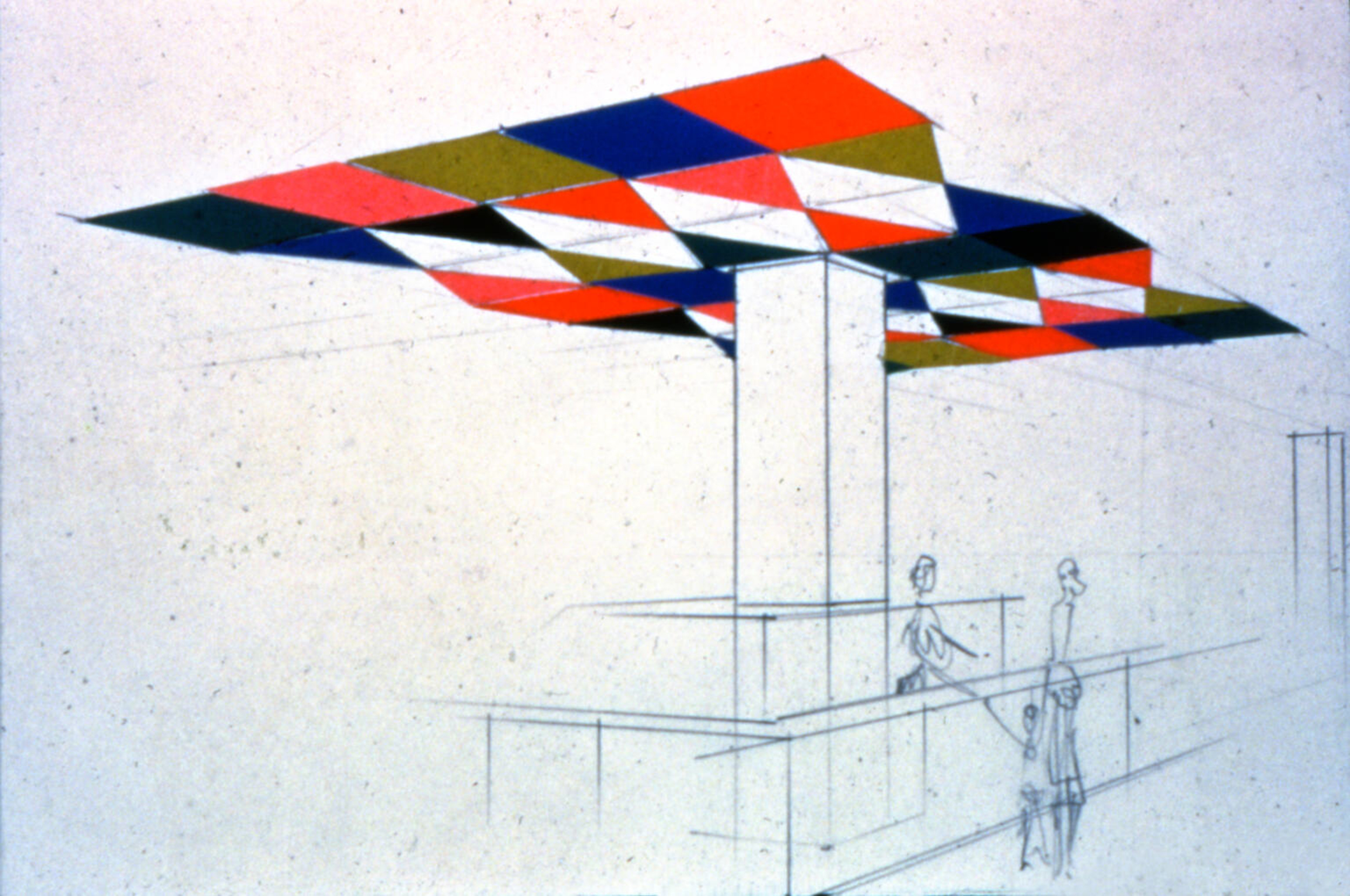
Inspired by the work of Eames friend, Buckminster Fuller, the Eames Office designed a geometric building kit unassumingly named The Toy in 1951. A label on the outside of the box describes the product as “Large-Colorful-Easy to Assemble-For Creating A Light, Bright Expandable World Large Enough To Play In and Around.”
The Toy was first in production from 1951 to 1959 and manufactured by Tigrett Enterprises in Jackson, Tennessee. It was the Eames Office’s second endeavor at designing and manufacturing a toy intended for the consumer market (Eames Masks were the first), however, it was the first to be successfully manufactured and sold.
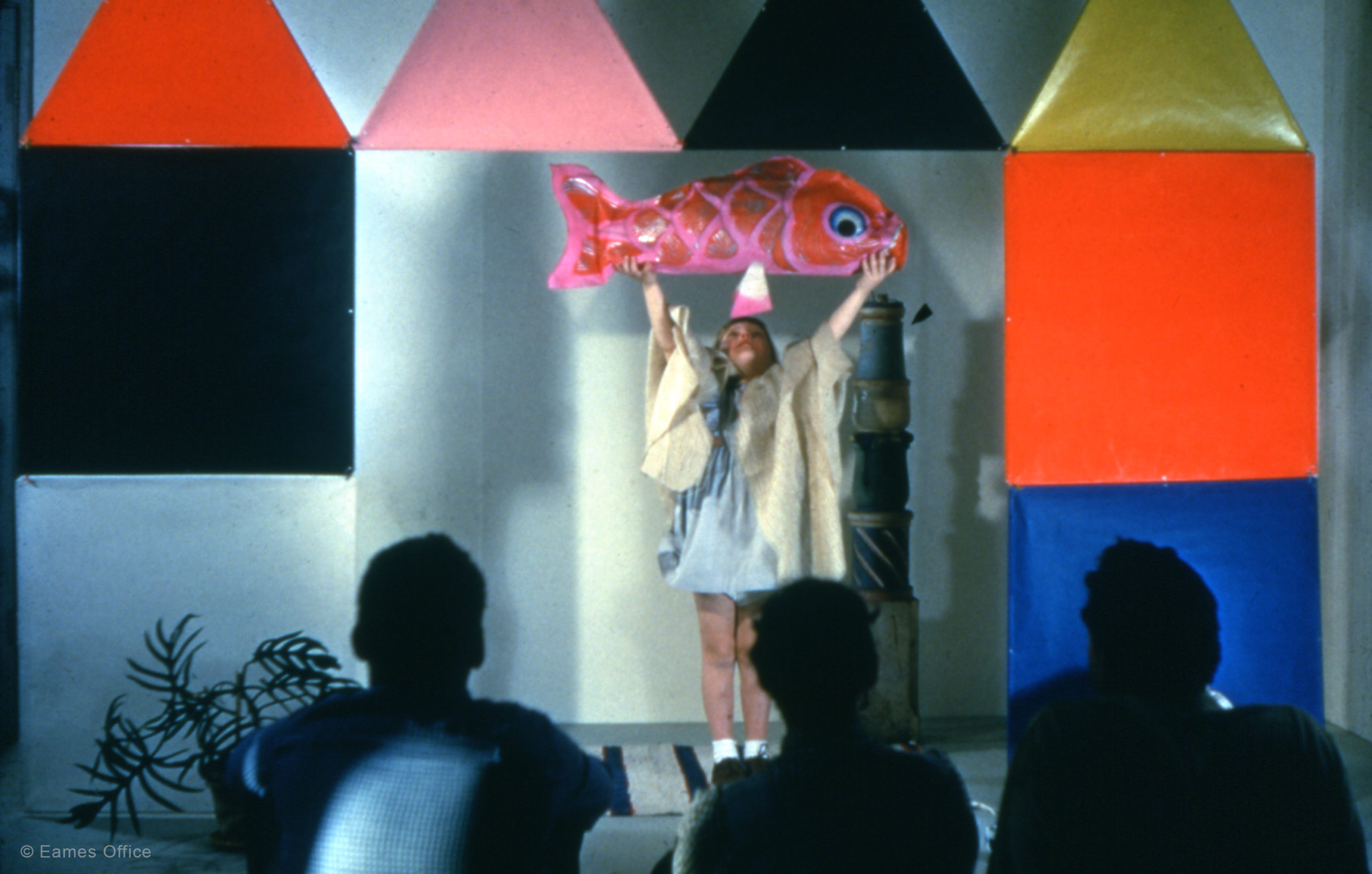
Children were the commercial target for The Toy, yet, Charles and Ray—being the aficionados of toys that they were—never excluded adults from the enjoyment. Instructions included inside the box reveal that The Toy‘s audience was not limited:
The Toy is designed for many colorful hours of fun for the whole family, and each member can share and enjoy The Toy in his own way.
The baby as a bright world to grow in–
The small child as houses and tunnels and tents to play in–
The boys and girls as towers, puppet theaters, large and exciting structures–
The high school age as brilliant party decorations, plays and pageant sets–
In college as campus and house decorations, fantastic and brilliant hanging objects to hover over a junior prom–
Young men and women, clubs, civic organizations, floats and festivals–
The Toy gives each one the means with which to express himself in big structures and brilliant colors.
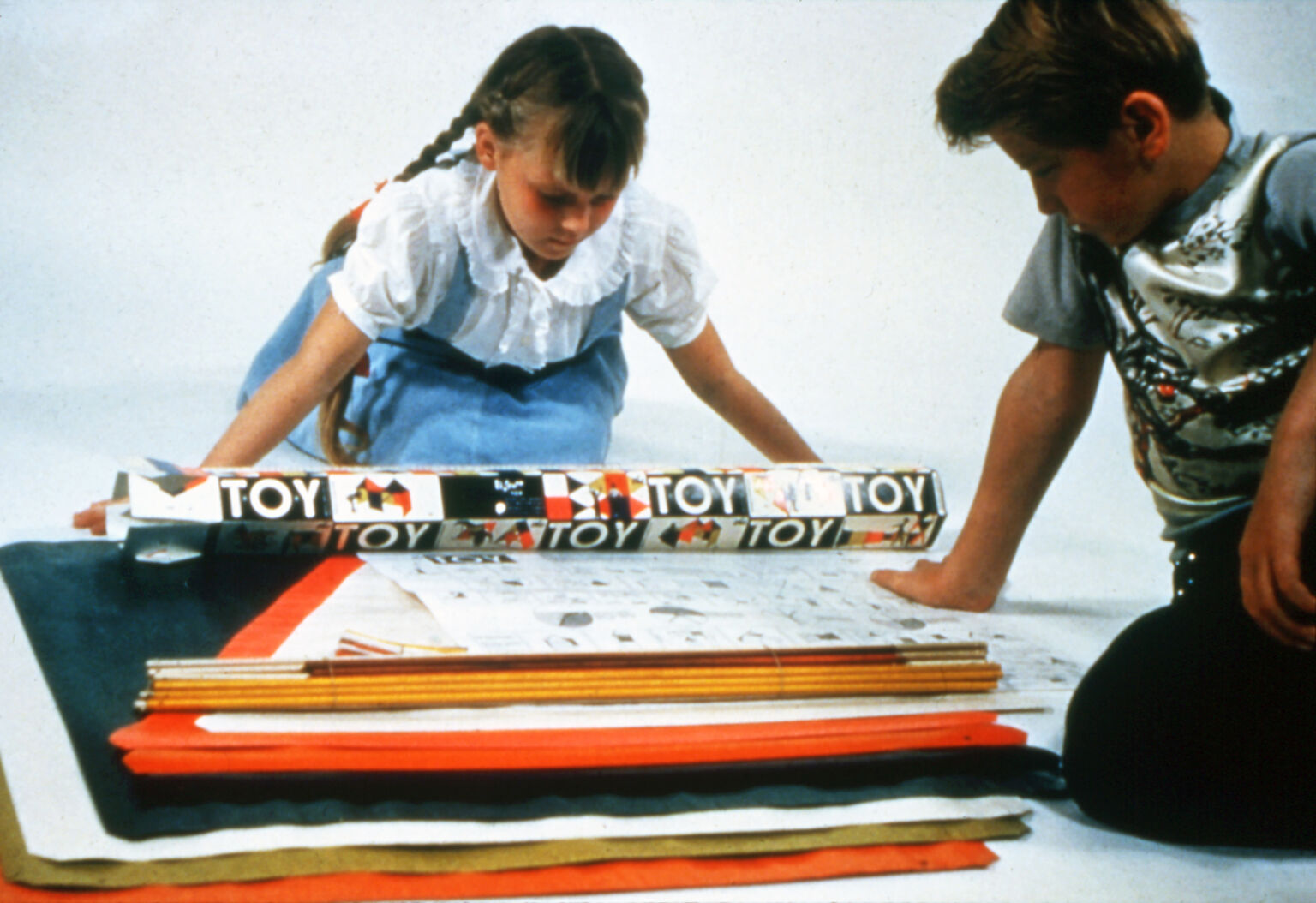
Originally the package was a bulky, flat box measuring thirty by fifty inches. Charles and Ray shrunk the package size at the suggestion of distributors and switched to a more economical thirty-inch-long and three and one-half inches in diameter hexagonal cardboard tube. To fit inside this tube, the original design’s flat and rigid panels, underwent a redesign that made use of flexible, easily rolled paper.
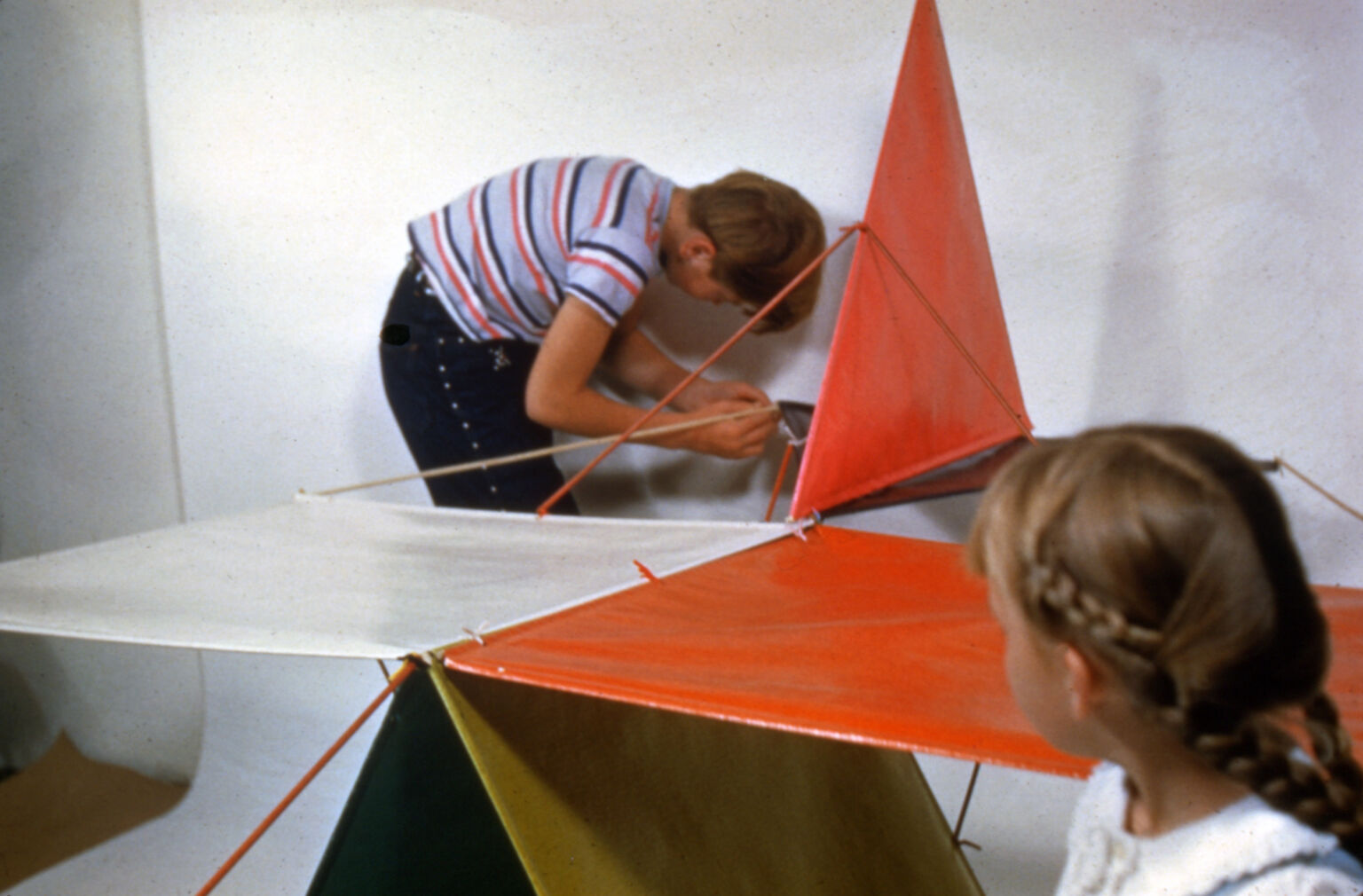
Each kit included green, yellow, blue, red, magenta, and black square and triangular panels made of a relatively newly invented plastic-coated, moisture-resistant paper. Thin wooden dowels accompanied the panels for support and pipe cleaners provided a secure and reusable connection. The kit also contained detailed instructions with tips and building inspiration.
In 2017, the Eames Office reintroduced The Toy, bringing it back for the first time in over 60 years for all to enjoy. Head to our online Eames Shop to find out more and to make The Toy your own.
